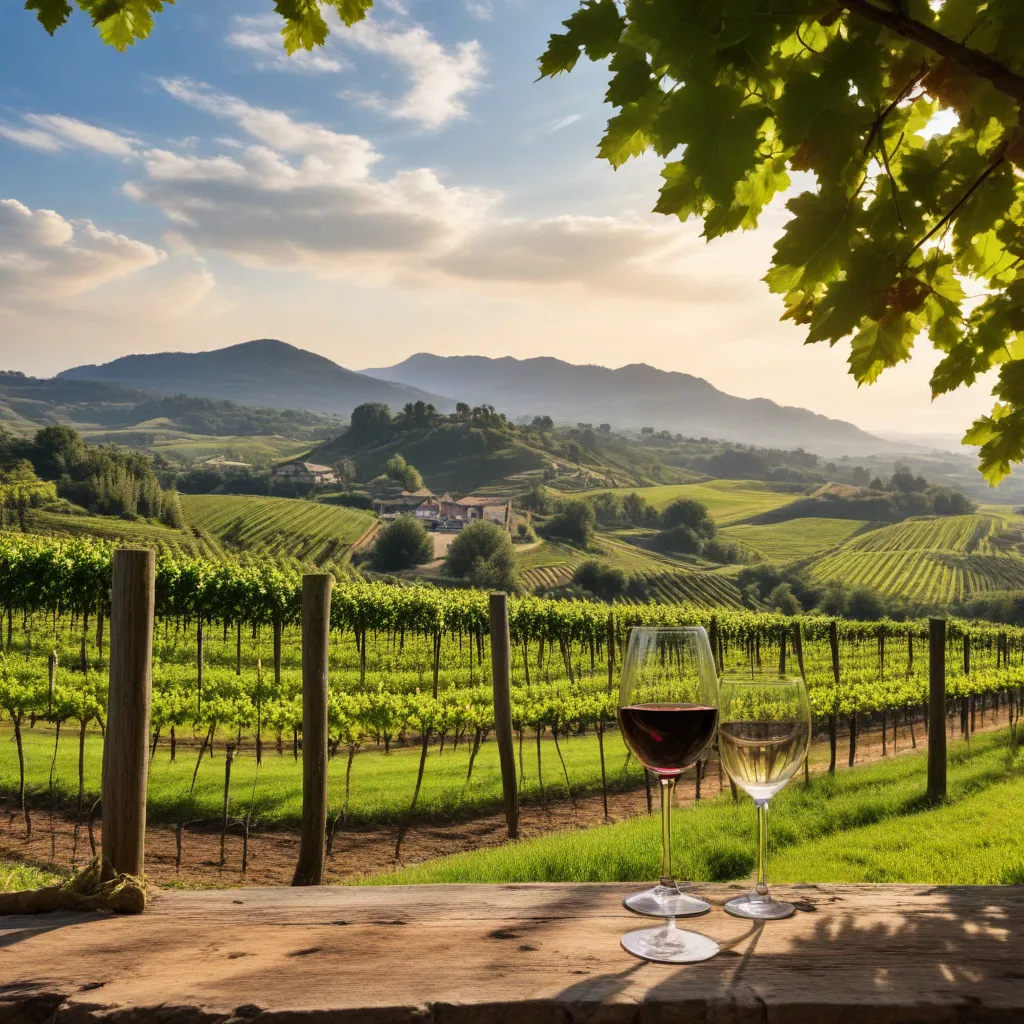
In a world saturated with renowned wine regions and familiar grape varieties, savvy oenophiles are increasingly seeking out the unexpected. The thrill of uncovering unique terroirs, obscure grape cultivars, and innovative winemaking practices has become a captivating pursuit, opening up a realm of novel sensory experiences and broadening our understanding of the dynamic, ever-evolving world of wine.
Old World Wine Regions
While the major wine-producing nations of Europe have long captured the imagination of wine enthusiasts, there are pockets within these established regions that offer a refreshing departure from the familiar. Take Maule, the heartland of Chile’s century-old Carignan renaissance. Tucked away in the country’s central valley, Maule’s diverse microclimates and clay-rich soils foster a distinctive expression of this noble grape. As winemaker Eduardo Jordan of De Martino explains, the region’s high-altitude vineyards and proximity to the Pacific Ocean create a longer growing season, resulting in Carignan with an earthy complexity and vibrant acidity that sets them apart from their counterparts in warmer, drier areas.
New World Wine Regions
Across the globe, the New World has witnessed a flourishing of unexpected wine regions, each carving out its own unique niche. In the northeastern United States, the state of New Hampshire has emerged as a surprising viticultural hotspot, defying the conventional wisdom that the region’s harsh climate and short growing season would be inhospitable to viticulture. Yet, by embracing cold-hardy grape varieties like Marquette and La Crescent, New Hampshire’s vintners have crafted a diverse array of wines that capture the essence of the state’s rugged terroir. As one winemaker notes, “New Hampshire wines reflect the state itself—resilient, diverse, innovative, community-oriented, and accessible.”
Emerging Wine Regions
Beyond the Old and New World divide, the global wine landscape is continuously evolving, with emerging regions challenging preconceptions and pushing the boundaries of what is possible. On the remote volcanic island of La Palma in the Canary Islands, for example, winemakers are harnessing the island’s dramatic topography and unique microclimate to produce distinctive, terroir-driven wines. Nestled between towering volcanic peaks and the Atlantic Ocean, La Palma’s vineyards thrive in a precarious balance, weathering unexpected challenges like the island’s recent volcanic eruption. Yet, it is precisely these unpredictable conditions that lend the region’s wines their powerful sense of place and authenticity.
Terroir and Climate
The defining characteristic of these unique wine regions is their unwavering commitment to terroir—the complex interplay of soil, climate, and human intervention that imbues each wine with a distinct personality. In Maule, the presence of underground shrimp colonies in the clay-rich soils not only reflects the region’s geological history but also influences the water-holding capacity of the vineyards, a critical factor in the dry-farming practices that are essential to the area’s Carignan production.
Likewise, the harsh, continental climate of Washington’s Columbia Valley, with its extreme temperature fluctuations and risk of frost and freeze, has shaped the state’s viticulture in profound ways. Winemakers have embraced cold-hardy grape varieties and employed innovative techniques, such as burying vines during the winter, to safeguard their precious vineyards. The result is a wine region that celebrates the triumph of resilience over adversity, producing bold, complex red wines that balance the region’s signature intensity with nuanced Old World elegance.
Grape Varieties
The penchant for exploring the unexpected extends to the grape varieties that thrive in these unique regions. In New Hampshire, the use of cold-hardy cultivars like Marquette and La Crescent has allowed local vintners to craft wines that are distinctly their own, often featuring bright acidity and pronounced fruit flavors that reflect the state’s cool climate. Meanwhile, in the Canary Islands, winemakers are reviving the cultivation of heritage grape varieties, such as the Listán Negro, which has adapted to the islands’ volcanic soils and maritime influences over centuries.
Production Methods
Innovative winemaking techniques further contribute to the distinctive character of these unique wine regions. In Maule, the practice of dry farming, which relies on the region’s clay-rich soils to store and distribute moisture during the growing season, allows for the production of Carignan that is unencumbered by the need for irrigation. Similarly, the prevalence of ungrafted vines in Washington’s Columbia Valley, a byproduct of the region’s inhospitable conditions for the phylloxera louse, lends the state’s wines a purity of expression that is increasingly rare in the modern wine world.
Exploring Unexpected Destinations
The pursuit of unique wine experiences often leads enthusiasts off the beaten path, to small, family-owned wineries and remote, niche-focused producers. In New Hampshire, for example, the state’s vibrant wine community fosters a spirit of collaboration and a shared passion for innovation, creating an environment where visitors can engage directly with winemakers and learn about the intricacies of local terroir. Likewise, on La Palma, the island’s rugged, volcano-dotted landscape and rich cultural heritage provide a captivating backdrop for immersive wine tourism, allowing visitors to connect with the land and the people who tend to it.
Benefits of Discovering Unique Wines
Embracing the unexpected in the world of wine offers a multitude of rewards. For the discerning palate, exploring niche regions and obscure grape varieties broadens one’s sensory horizons, introducing novel flavor profiles and textures that challenge preconceptions and stimulate the imagination. Moreover, supporting small, independent producers in these unique wine regions helps to sustain local economies and promotes sustainable viticultural practices that safeguard the natural environments that make these wines so special.
As the global wine landscape continues to evolve, the allure of the unexpected has never been stronger. By venturing beyond the well-trodden paths and embracing the diversity of the world’s lesser-known wine regions, wine enthusiasts can embark on a captivating journey of discovery, unearthing hidden gems and forging a deeper connection to the land, the people, and the art of winemaking. Whether it’s the earthy complexity of Maule’s Carignan, the crisp, fruit-forward elegance of New Hampshire’s whites, or the rugged, volcanic-infused wines of La Palma, the unexpected has never tasted so rewarding.
